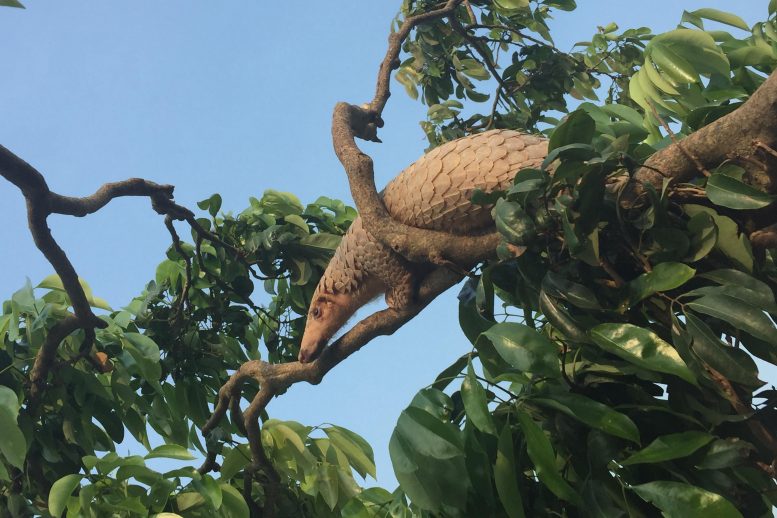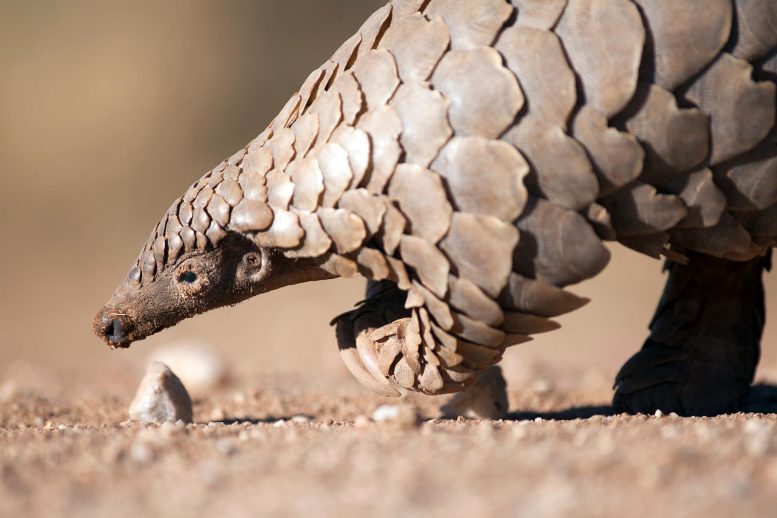


A Malay pangolin climbing a Lychee tree. Credit: Jinping Chen
Mammals known as scaly anteaters are natural hosts of coronaviruses, but are not likely the direct source of the recent outbreak in humans, according to a study published today (May 14, 2020) in the open-access journal PLOS Pathogens by Jinping Chen of the Guangdong Institute of Applied Biological Resources, and colleagues. As noted by the authors, the large-scale surveillance of coronaviruses in these animals, called pangolins, could improve our understanding of the spectrum of coronaviruses circulating in the wild, and could help prevent and control emerging infectious diseases.



Last December, an outbreak of the coronavirus disease (COVID-19) emerged in Wuhan, China. Recent studies have shown that severe acute respiratory syndrome coronavirus 2 (SARS-CoV-2) — the virus that causes COVID-19 — could have originated in bats. But SARS-CoV-2 may have spilled over to humans from another intermediate host, and the source of this virus is still unknown. To effectively control the disease and prevent new spillovers, it is critical to identify the animal origin of this newly emerging coronavirus. In the new study, Chen and colleagues examined whether pangolins could be an intermediate host for SARS-CoV-2.
The researchers assembled the whole genome of a coronavirus identified in two groups of sick Malayan pangolins. The results suggest that the pangolin coronavirus is genetically associated with SARS-CoV-2 and a group of bat coronaviruses. But further analysis suggests that SARS-CoV-2 did not arise directly from the pangolin coronavirus. Although this study does not support the idea that pangolins are an intermediate host directly responsible for the emergence of SARS-CoV-2, it is possible that other coronaviruses could be circulating in pangolins. According to the authors, wildlife conservation and limited exposure to wildlife will be important to minimize the risk that coronaviruses will spill over from wild animals to humans.
The authors state, “Pangolins could be natural hosts of Betacoronaviruses with an unknown potential to infect humans. However, our study does not support that SARS-CoV-2 evolved directly from the pangolin-CoV.”
###
Reference: “Are pangolins the intermediate host of the 2019 novel coronavirus (SARS-CoV-2)?” by Liu P, Jiang J-Z, Wan X-F, Hua Y, Li L, Zhou J, et al., 14 May 2020, PLOS Pathogens.
DOI: 10.1371/journal.ppat.1008421
Funding: This project was supported by wildlife disease monitoring and early warning system maintenance project from National Forestry and Grassland Administration (2019072) to Chen JP, GDAS Special Project of Science and Technology Development (grant number 2020GDASYL-20200103090, 2018GDASCX-0107) to Liu P.,Guangzhou Science Technology and Innovation Commission (grant number 201804020080) to Chen JP, Natural Science Foundation of China (grant number 31972847) to Jiang JZ, Guangzhou science and technology project (grant number 2019001) to Chen JP. The funders had no role in study design, data collection and analysis, decision to publish, or preparation of the manuscript.
Competing Interests: The authors have declared that no competing interests exist.

